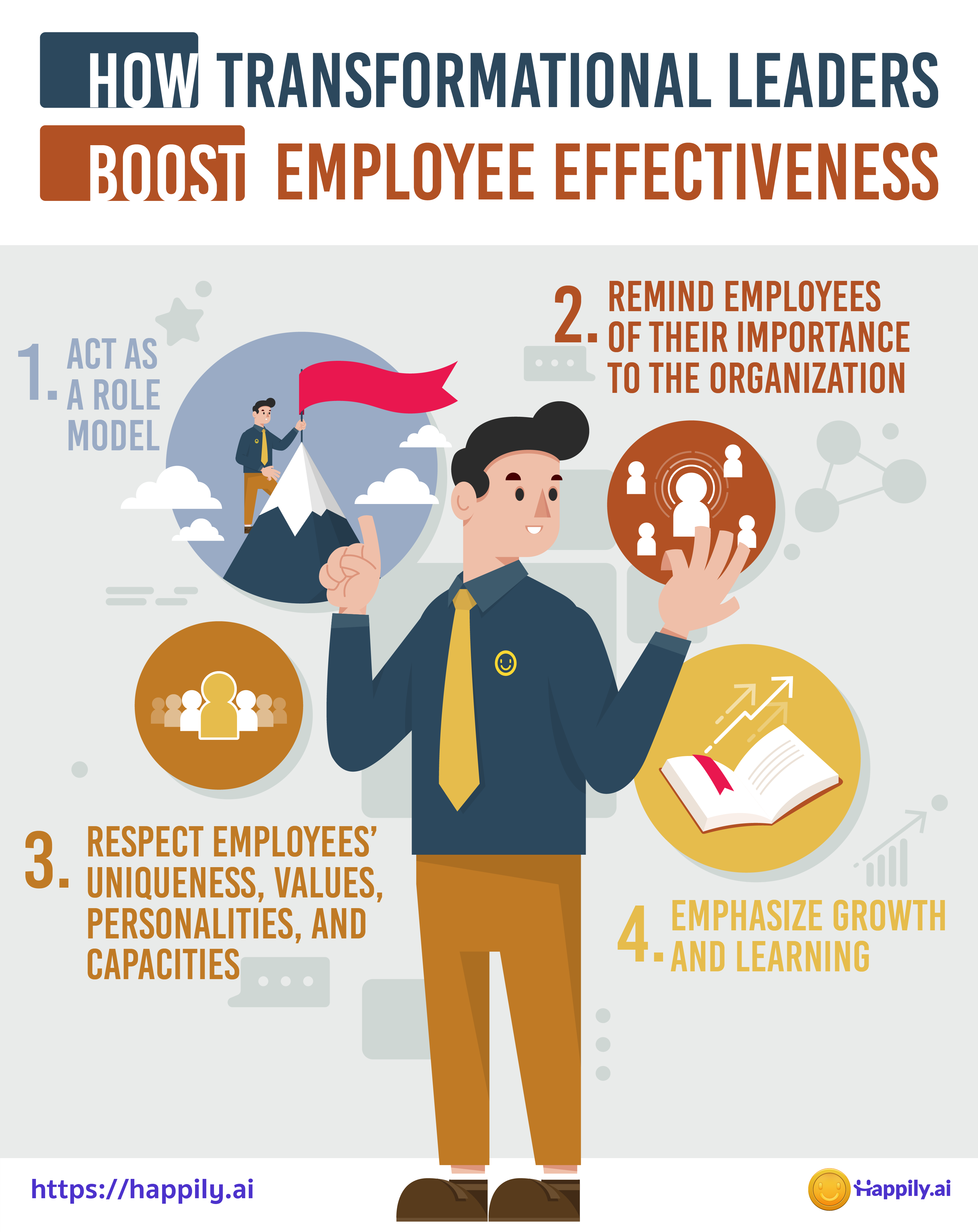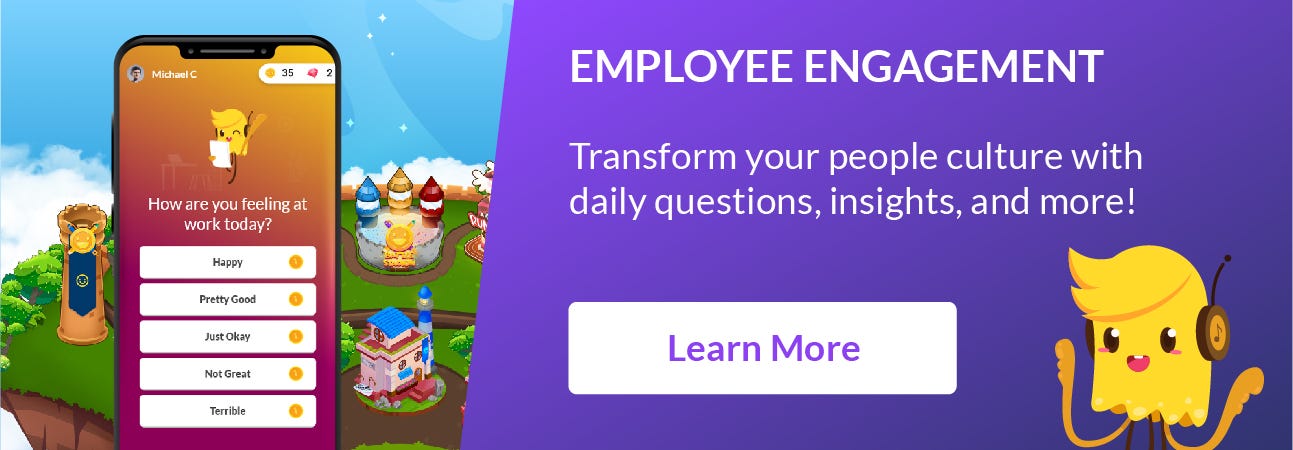One of the biggest challenges organizations are facing today is the increasing rate of turnover. Research done with employees who recently left their jobs shows that the reasons behind their leave mostly relate to their managers. While managers and leaders often misattribute employee turnover to other factors, Gallup’s comprehensive study (2015) shows that 50% of Americans leave their jobs because of their managers. (We also published a study associated with employee engagement and employee turnover in organizations, which goes into more detail about strategies to retain employees and how to create a culture of engaged, effective employees). Managers are not doing enough to communicate, motivate, and encourage employees’ growth. Having this knowledge, what can managers do to solve this problem? One way organization leaders and managers can reduce turnover is through promoting employee effectiveness.
What Is Employee Effectiveness?
Employee effectiveness is the capability of employees to produce a desired outcome in the best possible way. It is associated with the ability to achieve set goals, which also align with organizational goals. This includes producing high-quality results, creating a healthy work environment, and increasing revenue and profits.
Why should organization leaders and managers care?
The most important asset of an organization is its people, and the majority of an organization's people are employees. Research shows that effective employees play a crucial role in the effectiveness of an organization. Therefore, increasing employee effectiveness does not only support employees’ personal growth but also leads to organizational success.
What do effective employees look like?
An effective employee performs and delivers on expectations, works well with others to contribute to organizational goals, and has a higher desire to remain in the organization. Effective employees are more likely to become the organization's talents or people who have the ability to go above and beyond the job description and the organization’s expectations. You can find our study on employee engagement and its impact on organizational performance here.
Effective employees have the following traits:
- Effective Communication skills: a good speaker and a good listener
- Critical thinking skills: able to make decisions that produce the best results for the organization, especially under constraints
- Teamwork: works well with others, shares their knowledge with others, and learns from their colleagues
- Integrity and honesty: takes ownership of their role, producing both exceptional work and good conduct
The role of leadership in driving employee effectiveness
Role clarity plays a central role in employee effectiveness. Employees who have a clear understanding of their role know what their tasks should be, how to prioritize them, and how to perform in the optimal way. Leaders are responsible for providing role clarity through feedback and goal setting to enable employees to take ownership and find ways to achieve their goals.
Furthermore, research shows a causal relationship between transformational leadership and employee effectiveness. Transformational leaders inspire and motivate people to work towards common goals. Transformational leadership is achieved when leaders and followers help one another in advancing to a higher level of morale and motivation. The four components of transformational leadership include idealization influence, inspiration motivation, individualization consideration, and intellectual stimulation. These components are potent in promoting employee effectiveness because they help fulfill employees’ higher intrinsic needs: a sense of self-worth or value (self-esteem) and realization of one’s potential (self-actualization).

Transformational leaders boost employee effectiveness by:
- Acting as role models, which encourages employees to trust, admire, and identify themselves with their leaders.
- Reminding employees of their importance to the organization to inspire and challenge employees to produce exceptional work.
- Giving respect to employees’ uniqueness, values, personalities, and capacities, which helps employees develop a sense of belonging to the organization.
- Emphasizing growth and learning by encouraging employees to challenge the status quo and removing fear from work.
Conclusion
Employee effectiveness leads to an employee’s personal growth and the organization’s success. Effective employees are more likely to go above and beyond in their roles and are likely to stay longer with the organization. Organization leaders and managers should adopt practices that encourage employee effectiveness in order to reduce turnover and ensure the best outcome for the organization.
At Happily.ai, we help organizations create effective employees by encouraging employees to participate in recognition, feedback, self-improvement, and more. We facilitate daily check-ins, initiate recognition, and provide leaders and managers with real-time insights to employees and teams. To learn more, visit our platform here.

References
[1] Arwiphawee Srithongrung (2011) The Causal Relationships among Transformational Leadership, Organizational Commitment, and Employee Effectiveness. International Journal of Public Administration, 34(6), 376-388, DOI: 10.1080/01900692.2011.569917
[2] Georgopoulos, B.S. and A.S. Tannenbaum (1957) A Study of Organizational Effectiveness. American Sociological Review, Vol. 22, 534-540
[3] Ghadi, M. Y., Fernando, M., & Caputi, P. (2013). Transformational leadership and work engagement: The mediating effect of meaning in work. Leadership and Organization Development Journal, 34, 532–550. doi:10.1108/LODJ-10-2011-0110
[4] Korejan, M & Shahbazi, Hasan. (2016). An analysis of the transformational leadership theory. Journal of Fundamental and Applied Sciences. 8. 452. 10.4314/jfas.v8i3s.192.
[5] https://www.berlinsbi.com/blog/career-advice/what-makes-an-effective-employee
[6] https://www.effectory.com/knowledge/what-is-employee-effectiveness/
[9] https://www.verywellmind.com/what-is-transformational-leadership-2795313
[10] https://getlighthouse.com/blog/organizational-problems-root-cause-fix/
[11] https://getlighthouse.com/blog/people-leave-managers-not-companies/
[12] https://getlighthouse.com/blog/gallup-employee-engagement-survey-managers/









